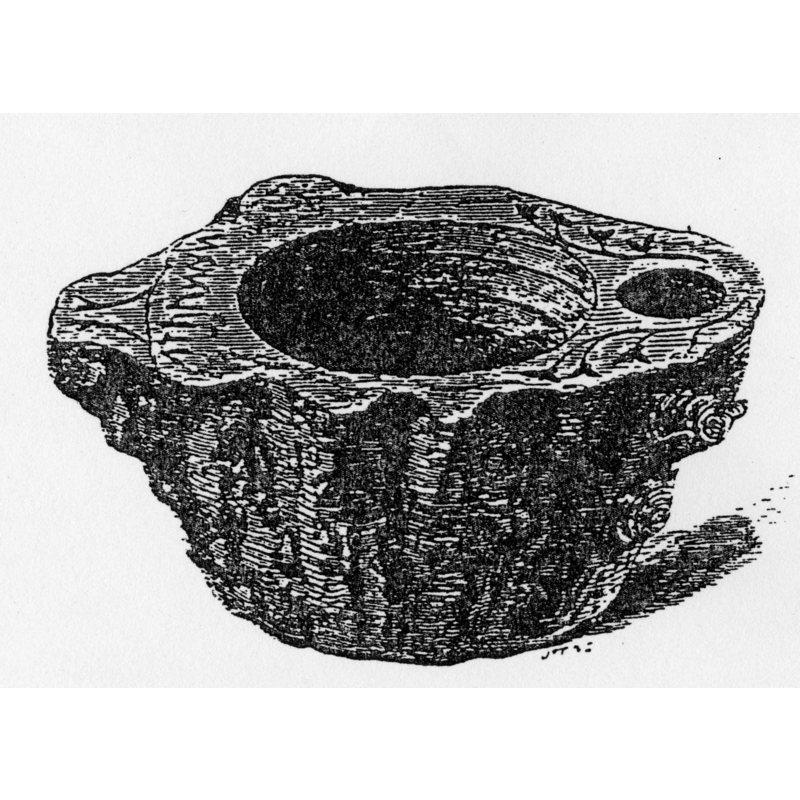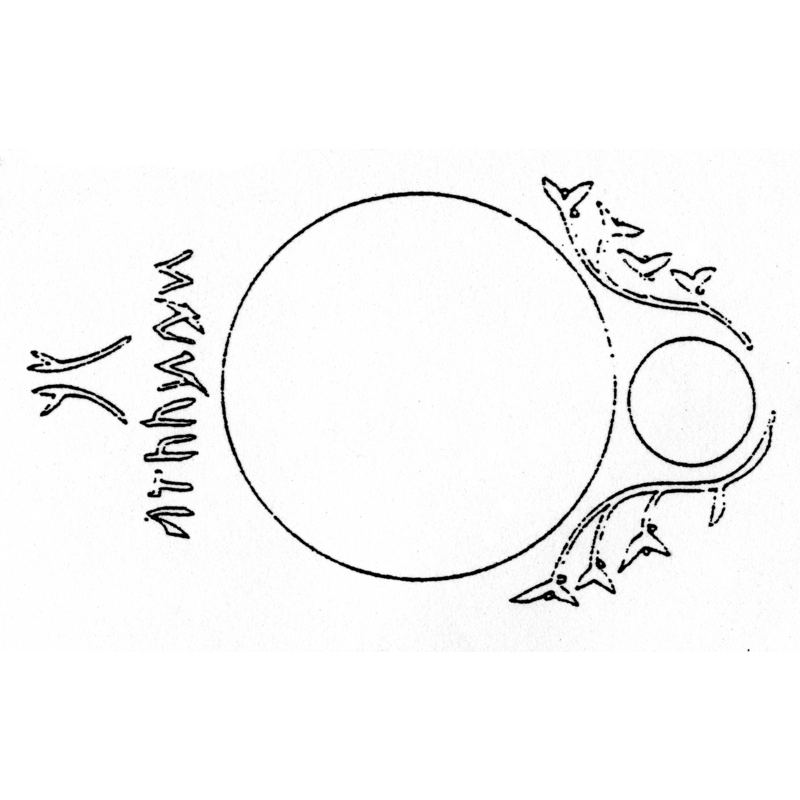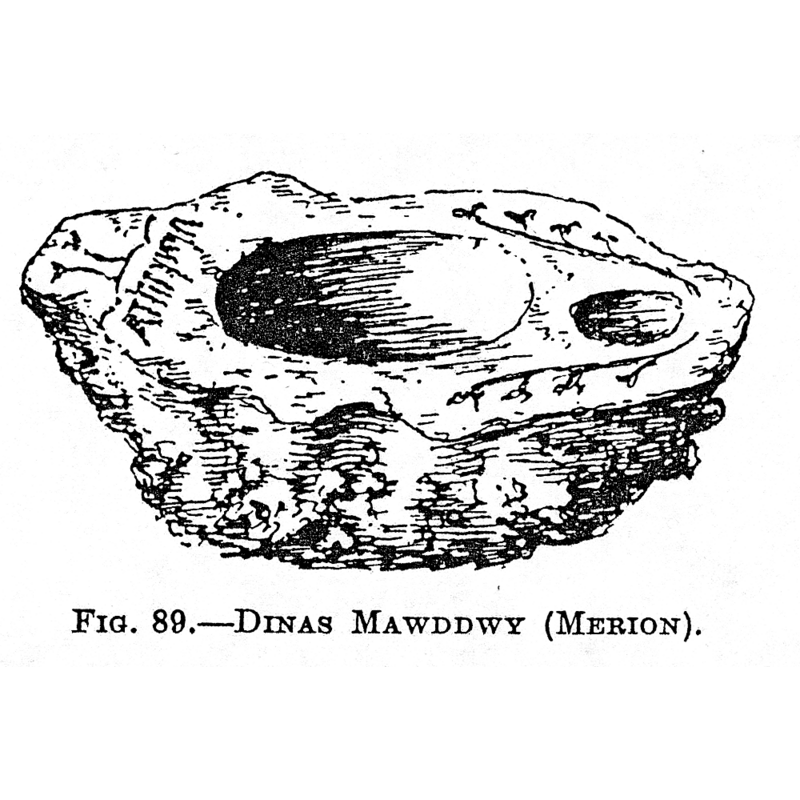Dinas-Mawddwy / Dinas Mowddwy

Image copyright © [in the public domain]
PD
Results: 7 records
design element - motifs - foliage
inscription
inscription
symbol - branch - olive - 2
view of font
view of font
INFORMATION
FontID: 05229DIN
Object Type: Baptismal Font1?
Church/Chapel: [moved to Pengwern Hall, Denbgs.]
Church Location: [coordinates given are for Dinas-Mawddwy]
Country Name: Wales
Location: Gwynedd
Directions to Site: Located 20 km ENE of Machynlleth, up the A470, about 50 km ENE of Aberystwyth
Historical Region: formerly Caernarfonshire and/or Merionethshire
Font Location in Church: [moved to Pengwern Hall, Denbgs.]
Century and Period: Pre-Conquest
Workshop/Group/Artisan: wooden font
Font Notes:
Click to view
The Gentleman's Magazine issue of July-Dec, 1856) reports the account given by Mr. W.W. Wynne, M.P., to the Archaeological Institute "of a singular wooden font of great antiquity and bearing an inscription which has not been satisfactorily explained, found in a turbary in Merionethshire. He produced a drawing of the curious object: the font is of knotty oak, rudely fashioned with the axe, and formed with two cavities,--one of large dimensions, capable of containing about six quarts [i.e., 1 1/2 Imperial gallons, almost 7 litres]; the other is at one side, of small diameter, and surrounded by a wreath of foliage coarsely craved on the margin; near this is also to be decyphered the word ATHRYWYN, whic has been interpreted 'discordantes sejungere', which may signify the cessation of the conflict between Christianity and Paganism, or the separation of the lusts of the flesh from the purity of the spirit by virtue of the holy Sacrament. The word may also signify happiness, pacification, or, as a verb, to reconcile. This primitive relique is now preserved in the hall at Pengwern, the seat of Lord Mostyn". Westwood (1876-1879) cites an article from the Journal of the Archaeological Institute (1856, vol. XIII: 292), reproduced in Archaeologia Cambrensis (1872: 258), of "an account, compiled by Richard Llwyd in 1790 [...] given by Mr. W.W.E. Wynne, M.P. [which is of the same initial source as quoted in The Gentleman's Magazine above]. Described and ilustrated in Bond (1908); a "block font found in a bog", "formed by sinking a hollow in a trunk or root of a tree"; the odd-looking object, shaped somewhat like a vessel of sorts, has a flat upper surface at the top with two holes, a small one on the right side and a larger one in the centre; on the sides of the holes on this upper surface, an olive branch is incised on either side; at the opposite end, an inscription [cf. Inscription area], "the word 'Athrywyn', which probably signifies 'reconciliation' or 'pacification'". (Ibid.). Bond (ibid.) reports the font as "preserved in Pengwern Hall, Denbigshire". Also described and illustrated in Tyrrell-Green (1928), who identifies the material as a "a piece of knotty oak". Farther on in this same source (ibid.) T-G writes about the inscription: "has a single word engraved upon it, which brings it into this class of fonts with inscriptions having a doctrinal significance. The word is the old Welsh ATHRYWYN. See in the Welsh Bible, 2 Sam. xiv. 6" 'Ac ilth law-forwyn yr oedd dau fab, a hwynt ill dau a ymrysonasant yn y maes; ond nid oedd athrywynwr rhyngddynt hwy; ond i naill a darawodd y llall, ac u'i lladdodd ef.' The English version (marginal reading) dives: 'There was no deliver between them,' a literal rendering of the original [here Hebrew text that cannot be reproduced]. Cf. also Prov. xviii. 18: 'Y coelbren a wna i gynhennau beidio, ac a athrywyn rhwng cedyrn.' In view of these uses of the Welsh word it seem s to mean 'Reconciliation,' and thus indicate that man, who is by nature the child of wrath, is at the font reconciled to God and made the child of grace."
COORDINATES
UTM: 30U 453327 5841236
MEDIUM AND MEASUREMENTS
Material: wood, oak
Number of Pieces: one
Font Shape: other
Basin Interior Shape: round
Basin Exterior Shape: other
Diameter (inside rim): 27.5 cm (7.5 cm the smaller well)
Basin Depth: 8.75 cm (2.5 for the smaller well)
Notes on Measurements: Tyrrell-Green (1928: 139) -- [Westwood (1876-1879: 170) has: "the larger hollow is 11 inches, depth 3 1/2 inches; diamtere of the less hollow 3 inches, depth about i inch; length of the log 1 foot 10 inches, thickness nearly 10 inches".]
INSCRIPTION
Inscription Language: Welsh?
Inscription Notes: Westwood gives the usual Welsh meaning of "happiness, tranquility, pacification". Bond gives "reconciliation" or "pacification" as probable meanings; Tyrrell-Green expands on the biblical textual context
Inscription Location: on the upper surface of the object
Inscription Text: "ATHRYWYN" -or- "ATHRYWYNN"
Inscription Source: Westwood (1876-1879: 169-170); Bond (1985, c1908: 107); Tyrrell-Green (1928: 139 and, especially, 160)
REFERENCES
The Visual Culture of Wales = Diwylliant gweledol Cymru, Cardiff: University of Wales Press, 1998-2003
Bond, Francis, Fonts and Font Covers, London: Waterstone, 1985 c1908
Davies, J.G., The Architectural Setting of Baptism, London: Barrie and Rockliff, 1962
Tyrrell-Green, E., Baptismal Fonts Classified and Illustrated, London: Society for Promoting Christian Knowledge: The Macmillan Co., 1928
Westwod, John Obadiah, Lapidarium Walliæ: the Early Inscribed and Sculptured Stones of Wales, delineated and described, Oxford: Printed at the University Press for the Cambrian Archælogical Association, 1976-1879

